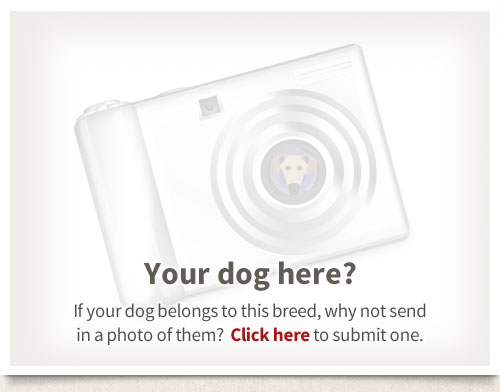Origin
The Deerhound is an ancient breed originating in Scotland and still known in some countries as the Scottish Deerhound. Descended from the Greyhound family of dogs it is speculated that they may have accompanied Phoenician traders to Britain some 3000 years ago and that the shaggy coat evolved as protection against a climate colder than that of their homeland. The Red Deer of Scotland were the traditional quarry of Deerhounds and the dogs were developed to be sufficiently courageous, fast, agile and powerful to run down and kill an antlered stag weighing at least 113 kg (250 lbs). The Deerhound also holds the title of ‘Royal Dog of Scotland’ as, during past centuries, no-one of lower rank than an Earl was permitted to own one. A combination of factors - the advent of firearms, the clearing of forests, and the collapse of the clan system in 1745 - saw the numbers of Deerhound dwindle considerably. It was the efforts of Duncan McNeill (Lord Colonsay) in 1825 which rescued the breed from the threat of extinction. Bred to type for centuries the Deerhound of the Middle Ages and those famously portrayed in the works of the 19th century artist Landseer differ little from the modern companion and show dog. Admired for their great beauty and their excellent temperament, as well as their ability in the field, the many good qualities of the Deerhound are summed up by Sir Walter Scott’s tribute to his dog Maida: “the most perfect creature of Heaven”.
Character
The Deerhound is renowned as one of the most faithful and sweet-natured of all the breeds of dog. He gives the utmost loyalty and affection to his master and family and in return asks only the pleasure of human company and friendship. It is his delight to be included in as many activities as possible and to be given a place in the home as a valued member of the household. Despite his great size he is very gentle and a charming and courteous house-dog who will settle quietly and take up surprisingly little space, content simply to be with his people. He is patient and tolerant of children but is not a suitable playmate for rough and tumble games. As with many of the hounds he is generally good with other dogs but he does have all the sharp instincts of the hunter so caution is required with cats and other small animals which may trigger his prey drive. Gardens need to be secure as he can effortlessly leap over fencing of average height and once out he may go for miles either hunting or for the sheer joy of running unconfined. A Deerhound in full flight is a magnificent spectacle, but not when his tremendous, ground-eating strides are leading him to a busy road. He can be somewhat wary with people he does not know but he will behave in a dignified manner, neither shy nor aggressive. He is unlikely to bark or growl at strangers on his territory but he is no coward and may act against a perceived threat if sufficiently roused.. For those who can physically and financially accommodate the needs of a large dog and can provide the exercise and company he needs the Deerhound is a fine choice of companion. He will grace your home and repay your love and attention with unswerving fidelity and devotion unto his last breath.
Exercise
“The perfect running machine” is how the Deerhound has been described. Bred for centuries to be capable of a full day’s work in the field without flagging, adequate exercise is essential to keep him physically fit and mentally stimulated. He will take as much exercise as is offered with long daily walks being the minimum needed. Allowing him to roam unsupervised is unwise as, behind those gentle eyes, is the brain and heart of a dedicated hunter who will efficiently despatch any ‘prey’ he may catch. The opportunity to stretch his legs in a secure area will help satisfy his urge to run. Without proper exercise he is likely to become very lazy and out of condition as he is relatively inactive indoors. Sports such as lure-coursing, racing, and agility will provide outlets for his energy and, although he is primarily a sight-hound, he has an excellent sense of smell and will enjoy tracking. Great care must be taken not to over-exercise puppies as this can lead to debilitating problems in later life. Playing around the house and garden is quite sufficient until their vulnerable joints and bones have matured.
Training
To enable him to fulfil his potential as a superb companion and a credit to his breed the Deerhound should receive at least basic obedience training starting at a young age. His tractable, willing to please nature means that he is a fairly easy dog to train provided that positive, motivational methods are used. He is a sensitive dog - nothing will ruin his confidence and erode his trust and respect more surely than harsh physical or verbal discipline. While he may not reach Obedience Trial Champion status the application of patience, kindness and consistency will bring out the best in him. As with training, socialization should be commenced as soon as possible. By introducing the puppy to as many of the things that he will encounter during his life, eg various people, places, noises, animals, etc., he will be well prepared to take his place in the world as a confident, well-mannered, dependable adult.
Health
- Cardiomyopathy
- gastric dilitation volvulus (GDV)
- bloat
- osteosarcoma
- osteochondrodysplasia
- may be sensitive to anaesthetics
Pictures
Some photographs of the Deerhound...





